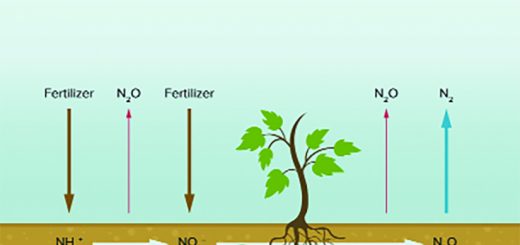The Silk Route – Pathway to International Trade -Fahmida Mehreen
International trade is a tool that connects the entire world. Export, import, exchange of foreign currency – all evolve around international trade that brings different nations and civilizations under one umbrella. Now, this idea of trading and going global is not a new concept. A model of international trade was initiated centuries ago, during the Han Dynasty in China, which was in power from 206 B.C. to 220 A.D. In around 138 B.C. Emperor Wu sent imperial ambassador Zhang Qian to make liaison with civilizations in Central Asia which brought in valuable information about the culture, people and land in the West. This eventually led to the development of the ‘Silk Route’, also known as the ‘Silk Road’.
The Silk Route is a very dominant part in world history. It is a vast network of trade routes from China to Far East stretching to Middle East and Europe. The Han Dynasty formally inaugurated the Silk Route in 130 B.C. by commencing trade with the West. It was actively used for many centuries till 1452 A.D. when trade with China was boycotted by the Ottoman Empire. The 600 years of legacy leaves a long-lasting mark in modern trading system, commerce, culture and history.
This 4,000 mile i.e. 6,400km caravan track started from Xi’an and followed the Great Wall of China towards the north-west. It bypassed the Takla Makan Desert and climbed mountains named Pamirs and cut across Afghanistan. It reached up to the Lavent, from where goods and merchandises where shipped across the Mediterranean Sea. From the West, the route stretched from Greco-Roman metropolis of Antioch, crossing the Syrian Desert past Palmyra to Ctesiphon, the Parthian capital, and Seleucia on the Tigris River, which is a Mesopotamian city in today’s Iraq. Thereon, it moved Eastwards over the Zagros Mountains to the cities of Ecbatana in Iran and Merv in Turkmenistan from where branches spread out to modern day Afghanistan going farther to Mongolia and China. Interestingly, from either of the directions, very few people traveled the entire route – goods were handled by several middlemen, a concept that is widely used in today’s modern trading framework.
Through this acclaimed trade route, various ports along the Mediterranean Sea were connected and goods could be shipped to many cities in the Roman Empire and thus, into Europe. Courtesy to the Silk Route, goods such as silk went Westwards, and wools, gold, and silver came to the East. There was massive cultural exchange. It is prevalent that China received Buddhism and Christianity from India via the Silk Route. The Roman Empire and the Kushan Empire in Northern India profited greatly from the business created through the Silk Route. As a matter of fact, the Ancient Greek word for China is ‘Seres’ which means ‘the Land of Silk’. The Silk Route thoroughly connected many strategically significant locations, including trading posts, markets, and thoroughfares planned to rationalize the carriage, interchange, supply, and storage of merchandises.
Even though the trade route was called the ‘Silk’ route, it was not only silk that travelled along this road. Items like fruits, vegetables, livestock, grains, leather products, religious objects and artefacts, precious stones, metals and many more objects were exchanged between the trading lands. Among the most traded items were gunpowder and paper, incidentally, both of which were invented by the Han Dynasty. The introduction of the paper was responsible for bringing an industrial change and in the way of communication. Over the years, the evolution of printing books and newspapers started, which enabled the exchange of information and news at a broader scale. Additionally, the rich spices of the East quickly became renowned in the West and brought a wholesome change in their food and cuisine. On the contrary, methods and techniques of making glass travelled from the Islamic cultures of the West to the East. But above all these, was the exchange of culture, language, religious beliefs, philosophy and science that enriched civilizations both in the East and in the West. All of these collaboratively had a long term cultural impact on the Western and Eastern trade zones.
Apart from trade, the Silk Route opened a passage for the explorers to travel. It was legendarily used by the Venetian explorer Marco Polo, who travelled from Italy to China which was under the Mongolian rule at that time in 1275 A.D. The explorer did not only travel through the waterway but also used the land to travel on a camel. He arrived at the palace of Kublai Khan where he is believed to have stayed for about 20 years. Marco Polo returned to Venice in 1295 A.D. using the Silk Route again when the Mongolian Empire was about to fall. Eventually, the Silk Route became the basis of his travel log named as ‘The Travels of Marco Polo’ which gave the Europeans and the rest of the world knowledge about the Asian and Eastern Culture.
The Silk Route is an ideal prototype of international trade. It had linked different parts of the world and allowed the exchange of goods while introducing cultural diversity. In today’s dynamic time cross border trade is a vital part of all economies, and it is impossible to have a sustainable economy without international trade. If we look at our country, we are heavily dependent on international trade through the export of ready-made garments and many other products while purchasing numerous items from other countries from across the globe. There has been an overall cultural shift which came through the doorway of international trade. Hence, it is undoubtedly eminent that a centuries-old discovery has in due course led to timeless world development. The Silk Route is a golden discovery in history whose prominence is recognized, in some way or the other, even today.
















Recent Comments